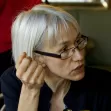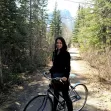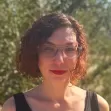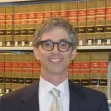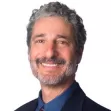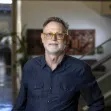The Daily Source of Urban Planning News
Segway Squad
<p>Following a series of Segway pilot tests in other Canadian cities, the town of Sylvan Lake Alberta is loosening up laws restricting them the space age vehicles to private property.</p>
Should Nuclear Reactor Be A National Landmark?
<p>The B Reactor at the decommissioned Hanford Nuclear Site in Washington State is up to become a national landmark for its role in producing uranium for The Manhattan Project.</p>
New Anchor For New Orleans
<p>New Orleans officials say they have enough grants and private funds to move forward on a "Great Lawn" park for the city, functioning as a gathering place and a link to other attractions.</p>
Electricity and Rail Can Solve Our Energy Woes
<p>Writer Benjamin J. Turon argues that we aren't in an energy crisis as much as a transportation crisis, and that we already have all the technology we need.</p>
FEATURE
Taking Action for 'More and Better Options'
Congressman Earl Blumenauer (OR-3) is doing more than responding to Gov. Glendening's recent op-ed on Planetizen calling for more and better options -- he's also introducing legislation to do just that.
Transit Authorities Say Too Little, Too Late
<p>The provincial government of Montréal challenged transit authorities to increase capacity in time for school. One authority says,'It's been 10 years we've been telling them to put new money into buses and métros...what can they do in two months?'</p>
The Interactive Playground
<p>Architect David Rockwell has some new ideas about what makes a good public playground. With movable, buildable foam blocks, his experimental playground in Brooklyn gets kids actively and creatively involved in their play.</p>
A Scandal At The Nation's Largest Community Organizing Group?
<p>The New York Times reported last week that the country's largest and most successful progressive community organizing group covered up a $1 million embezzlement. Peter Dreier and John Atlas put the controversy in the larger context.</p>
Feds Plan 'Energy Corridors' Through National Parks
<p>The Department of Energy is proposing to construct massive "energy corridors", land designated solely for the purpose of energy conduction like oil, hydrogen and electricity.</p>
Walking and Well-Being
<p>Walkable Communities founder Dan Burden believes walkable communities contribute to greater happiness -- and that Silicon Valley has a thing or two to learn from Denmark.</p>
Who Picks Up the Slack When Counties Dissolve?
<p>As timber payments dry up, two Oregon counties are warning that they could dissolve in a year, leaving many in the state wondering how to provide services for residents.</p>
A Newer, Better Poverty Rate Formula
<p>New York City plans to revise the way it assesses poverty levels in the city, bringing in more variables and cost-of-living considerations. Officials expect the new measurement to be more accurate, and are calling on other cities to follow suit.</p>
The American Lawn, and its Opponents
<p>The New Yorker traces the history of the American lawn from 1841, commenting on their unnatural origins, and finally analyzing the alternatives suggested by anti-lawn movements.</p>
Living in a Zero-Waste City
<p>In Kamikatsu, Japan, waste is not a problem -- mainly because new policies practically forbid it. But citizens have adapted to their new zero-waste lifestyle.</p>
The Best Places to Live in America
<p><em>CNN Money</em> has released its ranking of the best places to live.</p>
Preservation vs. Revitalization in Seattle
<p>Planners in Seattle want to add housing to Little Saigon, a neighborhood with a strong Vietnamese culture, without disrupting the district's character or displacing residents.</p>
BLOG POST
Bike Language: the Wave, the Yell and the Nod
City cycling can be hectic. Let's be realistic: most American cities are not meant for cyclists. It would be great if they were, but for now, our city forms are primarily designed for the movement of cars. Because cities are made for cars, it's understandable that car drivers tend to disregard the fact that somebody might be riding a bike out there. (<a href="/interchange" target="_blank" title="Planetizen Interchange">Interchange</a> blogger <a href="/user/405" target="_blank" title="Planetizen Interchange blogger Mike Lydon">Mike Lydon</a> recently wrote an <a href="/node/33877" target="_blank" title="The Bicycle Network - by Mike Lydon - Planetizen Interchange">excellent piece about planning for bicycle networks</a>.) Until our urban forms and public policies encourage the use of roads by a variety of transportation types, the burden is on cyclists to assert their role in the transit jungle. Communication is key to achieving this goal. Safe cycling (and safe transportation in general) relies heavily on communication. Safe cyclists speak bike language -- a rudimentary system made up of three main components: the wave, the yell and the nod. <br />
FasTrak Toll Hacking: Dangerous Or Ridiculous?
<p>A "Black Hat security researcher" claims he has discovered security flaws in the FasTrak toll transponder used by drivers in California and Colorado. However, the story is quickly dismantled as "baloney" by a toll road industry insider.</p>
Do Sustainable Buildings Need to Be Ugly?
<p>As the number of sustainable buildings increase rapidly, ecologically friendly designs are shedding an ugly past for a sleeker and more striking future.</p>
Pagination
Caltrans
City of Fort Worth
New Jersey Institute of Technology
Mpact (founded as Rail~Volution)
City of Camden Redevelopment Agency
City of Portland
City of Laramie
Urban Design for Planners 1: Software Tools
This six-course series explores essential urban design concepts using open source software and equips planners with the tools they need to participate fully in the urban design process.
Planning for Universal Design
Learn the tools for implementing Universal Design in planning regulations.



























